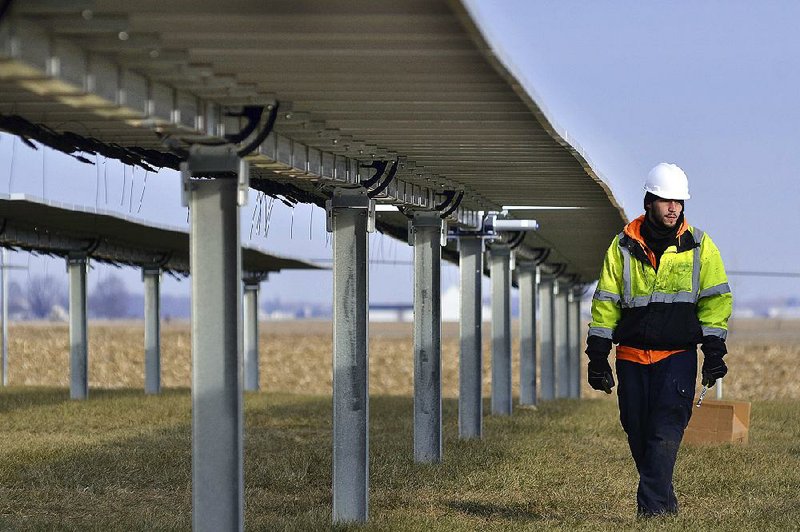The price of rooftop solar systems appears to be flattening in California, and costs in San Diego are following the same pattern, judging from a recent report that looked at the first six months of 2017.
"In years past, you have seen huge drops," said Ryan Willemsen, founder and CEO of Solar to the People, a San Diego startup that put the report together. "But now, prices are really stabilizing."
In 1998, the national median price to install a residential solar system came in at slightly more than $12 per watt, and those numbers fell dramatically in succeeding years, especially in California, the nation's leader when it comes to the number of homeowners with rooftop photo-voltaic systems.
According to the Solar to the People analysis, the average cost per watt for the first six months in California is $3.09.
In San Diego, the average price through the first half of this year was $3.02, compared with $3.09 a watt in 2016 and $3.13 in 2015.
That's a nice reduction but not spectacular, compared with earlier years, and Willemsen said it reflects how the California solar market is maturing.
"A lot of the people most apt to convert into solar consumers have already done it," Willemsen said. "So now you're seeing installation companies spending more time trying to find people who want to have solar installed, educating them, doing advertising, all those things, and it's bumping up their costs."
There are also some financial factors.
Most in the solar industry expect President Donald Trump to adopt import tariffs on solar panels that are manufactured overseas.
The U.S. International Trade Commission last month sent a number of recommendations to Trump. While the suggested tariffs were not as high as many in the solar industry feared -- and would affect large, utility-scale projects more than residential solar -- imposing tariffs would still put upward pressure on prices for installers.
Trump has until Jan. 26 to make a decision.
In addition, in a little more than two years the all-important federal tax credit will be reduced.
The Investment Tax Credit allows a 30 percent reduction in the cost of installing solar panels. But the credit is scheduled to fall to 26 percent in 2020, 22 percent in 2021 and 10 percent from 2022 and beyond.
There's also uncertainty whether "Net Metering 2.0" rules adopted in January 2016 by the California Public Utilities Commission will turn out to be a net benefit or loss for rooftop solar customers in the long-run.
"I have no doubt that in the long-term, [solar costs] will keep dropping but in the next couple years that could change," Willemsen said. "If you were considering going solar in 2000, it would have made sense to wait, the way prices were going down each year. But now that prices have leveled off and I think might bump up a little, it no longer makes so much sense to wait."
The report divides California into 12 regions, and San Diego fares pretty well.
The area is third-lowest when it comes to the average cost to install home solar -- $17,224. The Central Coast is the cheapest [$15,939], while Redding and Shasta/Cascades is the most expensive [$20,854].
Breaking down costs on a per-watt basis, San Diego finished fourth ($3.02), which is 7 cents less expensive than the state average. North Coast came in first ($2.88 per watt), while the San Francisco Bay Area and Napa/Sonoma came in last ($3.34).
Willemsen said the Bay Area price was probably because of higher labor costs there.
Once homeowners decide to go solar, the report indicates that they build as much as they can afford. The average size of a solar panel system installed in the first six months of 2017 was 6.1 kilowatts -- a healthy increase from the 5.5 kilowatts seen in 2015 and 5.8 kilowatts in 2016.
In existence for going on three years, Solar to the People makes its money by offering customers multiple quotes from its network of installers, who then pay the company for referring them to residential projects.
The numbers from the report came from analysis based on data from California Distributed Generation Statistics, with prices coming after the federal solar investment tax credit had been applied.
SundayMonday Business on 12/31/2017

